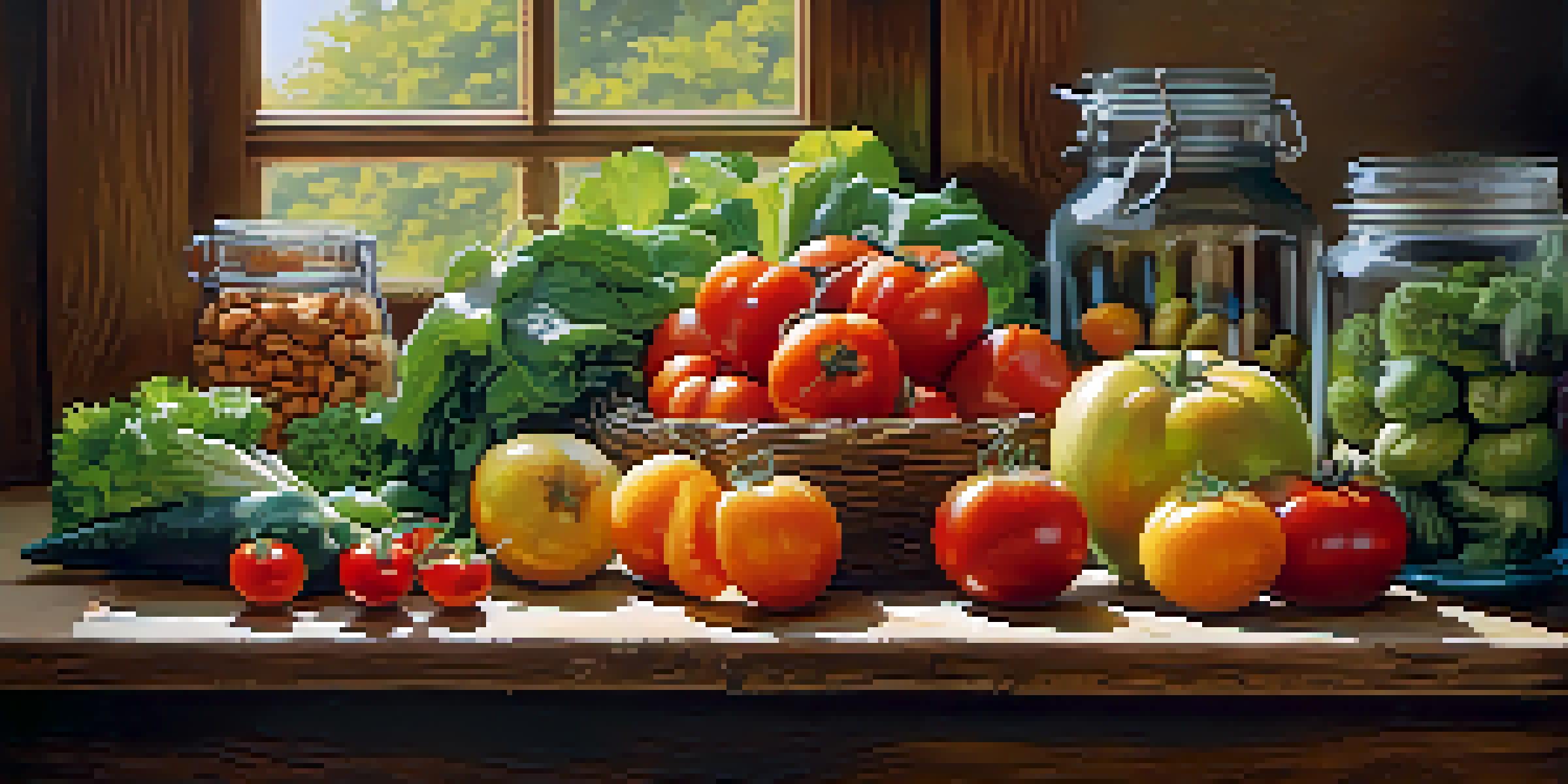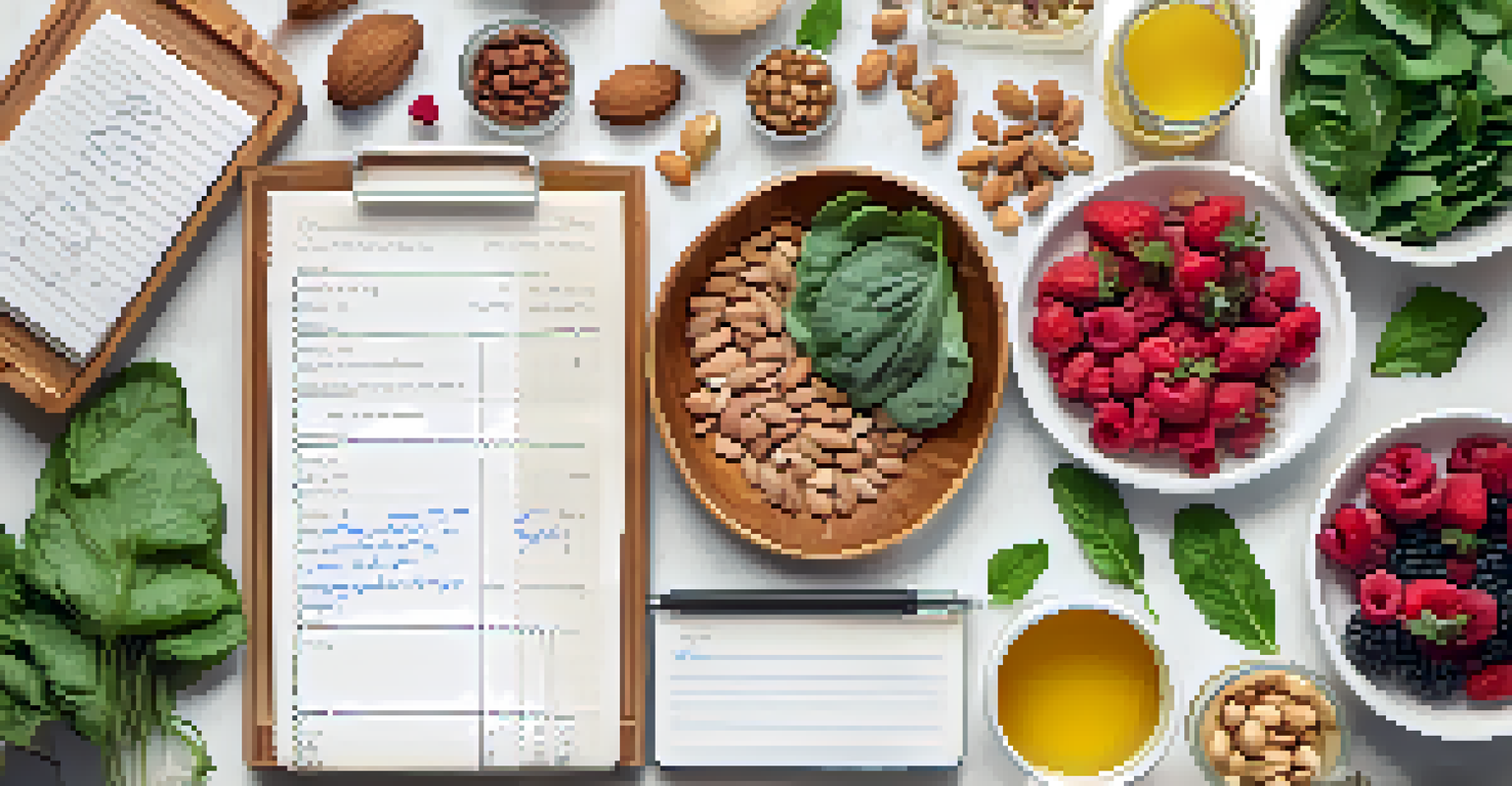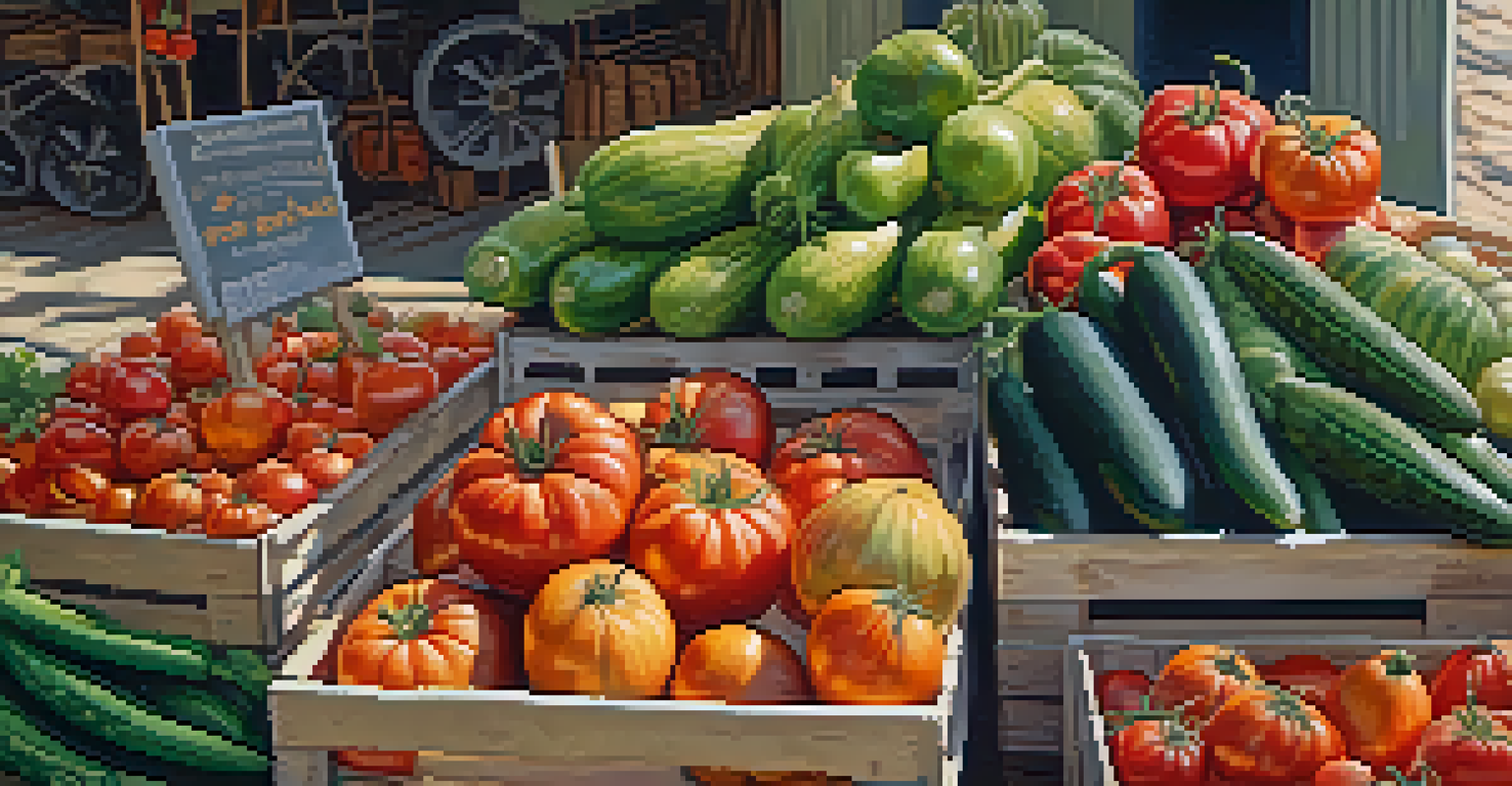Grocery Shopping Tips for Raw Food Meal Prep Success

Understand the Basics of Raw Food Diet
Before diving into grocery shopping, it’s crucial to grasp what a raw food diet entails. This diet focuses on consuming unprocessed, plant-based foods, predominantly fruits, vegetables, nuts, and seeds. Understanding these principles can help you make informed choices while shopping.
Let food be thy medicine and medicine be thy food.
For instance, raw foodists believe that cooking can destroy essential nutrients and enzymes that are beneficial for our health. This means your grocery list should be filled with fresh produce and whole foods, steering clear of processed items. It’s all about nourishing your body with the best nature has to offer.
So, as you prepare to hit the grocery store, keep in mind that the aim is to maximize freshness and nutritional value. The more vibrant and alive your food looks, the better it is for your raw food meal prep.
Create a Strategic Grocery List
A well-thought-out grocery list is your best friend when it comes to raw food meal prep. Start by planning your meals for the week, which can help you identify exactly what ingredients you need. This not only saves time but also ensures you avoid impulse buys that might not align with your raw food goals.

Include a variety of fruits, vegetables, nuts, seeds, and herbs on your list. For example, think about including leafy greens like kale, vibrant fruits like berries, and protein-packed nuts like almonds. This variety not only keeps your meals exciting but also ensures you get a balanced intake of nutrients.
Master Raw Food Basics
Understanding the principles of a raw food diet helps you make informed grocery choices.
As you shop, stick to your list as much as possible to maintain focus. Remember, the more organized you are, the smoother your grocery shopping experience will be, leading to a successful raw food meal prep.
Choose Fresh and Organic Produce
When shopping for a raw food diet, the quality of your produce matters significantly. Fresh, organic fruits and vegetables not only taste better but also come packed with more nutrients. Look for produce that is in season for both optimal freshness and flavor.
You are what you eat, so don’t be fast, cheap, easy, or fake.
For instance, when you visit the store or farmers market, consider choosing organic tomatoes over conventional ones. Organic produce is grown without synthetic pesticides and fertilizers, which aligns perfectly with the raw food philosophy of purity and health.
Always inspect your fruits and veggies for any signs of spoilage. A quick squeeze or visual inspection can help ensure you’re picking the best quality. After all, the success of your raw food meal prep hinges on the ingredients you start with.
Explore Bulk Buying for Savings
Bulk buying is a fantastic strategy for those committed to a raw food diet, as it often translates to savings. Items like nuts, seeds, and dried fruits are typically available in bulk, allowing you to purchase just the right amount without overspending. Not only does this save money, but it also reduces packaging waste.
For example, consider visiting a local bulk foods store where you can fill your own containers with almonds or chia seeds. This not only cuts costs but also supports eco-friendly practices. Plus, having these ingredients on hand can make meal prep easier and more flexible.
Choose Fresh, Organic Produce
Opting for fresh, organic fruits and vegetables enhances the nutritional quality of your meals.
However, be mindful of storage. Keep bulk items in airtight containers to maintain freshness and prevent spoilage. With the right approach, bulk buying can be a game-changer for your raw food meal prep.
Don’t Forget About Frozen Options
While fresh produce is a staple in a raw food diet, frozen fruits and vegetables can also play a vital role in your meal prep. They are often picked at peak ripeness and flash-frozen, preserving their nutrients and flavors. This can be a lifesaver when certain items are out of season or if you want to save time in your meal prep.
For example, frozen berries can be blended into smoothies or added to raw desserts without the hassle of washing and chopping fresh ones. They can provide the same nutritional benefits while also adding convenience to your routine.
Just be sure to check the labels when purchasing frozen items; avoid those with added sugars or preservatives. By incorporating frozen options, you can enjoy a variety of flavors and textures in your raw food meals throughout the year.
Incorporate Local and Seasonal Foods
Shopping for local and seasonal foods can elevate your raw food meal prep experience. Seasonal produce is usually fresher, tastier, and more affordable. Plus, supporting local farmers promotes sustainability and reduces your carbon footprint.
Visit farmers markets or join a community-supported agriculture (CSA) program to get your hands on the freshest local produce. For example, in summer, you might find juicy tomatoes and cucumbers, while fall brings a bounty of squash and apples. These seasonal foods can inspire your meal prep and keep it diverse and exciting.
Embrace Local and Seasonal Foods
Incorporating local and seasonal produce not only boosts flavor but also supports sustainability.
Make it a habit to check what’s in season in your area each month. By focusing on local and seasonal options, you’re not just eating well; you’re also connecting with your community and enjoying the best flavors nature has to offer.
Stay Mindful of Food Storage
Proper food storage is key to ensuring the longevity of your raw ingredients. Once you return from the grocery store, take the time to store your produce correctly. For example, leafy greens should be kept in a breathable bag in the fridge to maintain freshness, while avocados can be stored at room temperature until they ripen.
Investing in good-quality storage containers can also help keep your nuts and seeds fresh. Glass containers with airtight seals are excellent for reducing exposure to air and moisture, which can lead to spoilage. Labeling your containers can also help you keep track of what you have on hand.

By maintaining an organized and mindful approach to food storage, you’ll minimize waste and maximize the time you can enjoy your raw food creations. This way, you can ensure that your meal prep remains efficient and delightful.